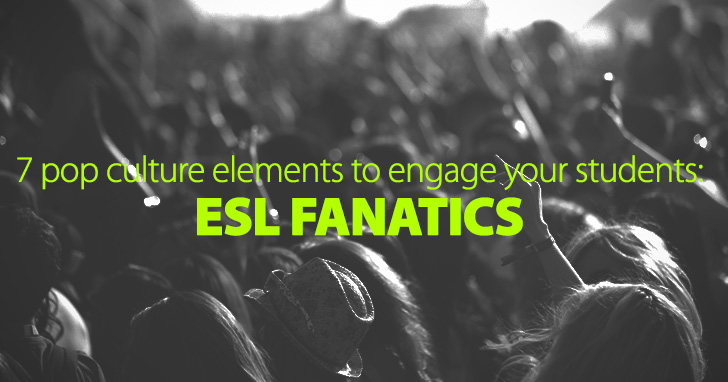ESL Fanatics: 7 Pop Culture Elements You Can Use to Engage Your Students

If you use any sort of social media sites these days, you're probably very familiar with GIFs and memes. Memes are constantly being shared on Twitter and Facebook, while GIFs now crowd the comments section of many Facebook posts. These images offer succinct ways for people to display their emotions and inject a little humor into the conversation. They also serve as a great teaching tool. Get your ESL students to think outside of the box and express themselves creatively by incorporating GIFs and memes in the classroom.
Many teacher sites invite teachers to share how their day went or how they're feeling about the school year by commenting with a GIF. You can enjoy a similar activity with your students by challenging them to find GIFs to cover a range of emotions. What GIF would you use when you're happy? What about when you're disappointed? How about when you're too tired to move? These words will help students learn how to use different emotion words and some of the connotations between words. For example, students may choose different GIFs for a bad day and a terrible day.
With younger students or beginning learners, you can use a similar activity. Instead of having students provide the GIFs, find some GIFs to represent different emotions, and then give students a list of those emotions. When you display the GIF on the screen, students can shout out the emotion that it is connected with. The same type of activities can be done to help students learn other vocabulary words.
In addition to using GIFs to learn emotions, more advanced students can use GIFs to improve their storytelling skills. Have students choose GIF and make up a story to go with the GIF. For example, if a GIF shows a person dancing in a silly manner, the student may talk about how the person was trying to impress someone with his crazy dancing skills. Telling stories gives students a chance to improve their speaking skills and gives them an opportunity to become more comfortable speaking in front of the class.
Students can also write their own short stories and illustrate them with GIFs. Start with short sequences of events that contain 3-4 sentences and have students illustrate each sentence with a GIF. For example, One day a boy met a girl. The boy and girl fell in love. Then they got married. They lived happily ever after. Each sentence would be illustrated with its own GIF related to the story.
Memes are typically pictures that have funny captions. You can show students a random picture and have them try to come up with their own caption for the picture. You can also give students a list of captions and have them match each caption with the picture. If you work with older students, you can also buy or create your own version of the game What Do You Meme? The game is similar to Apples to Apples. Players must choose a caption from their hand that best fits the meme shown. If you purchase the game, be sure to review and remove any cards that students may find offensive or that are not school appropriate.
Sites such as Make a Meme and Giphy allow students to create their own memes and GIFs. Before letting students use the sites, you may want to review the content to make sure it is appropriate. Many of the pre-made memes and GIFs are designed for adults. Students can be encouraged to create their own memes and GIFs to use as part of an online discussion or to illustrate different concepts. They're a great way to teach students about humor and have them practice writing in English.
Chances are students are already using GIFs and memes to express themselves online, so why not bring them into the classroom? They offer a great way to inject some humor into your lesson while still giving students a chance to learn new vocabulary and practice their listening and speaking skills.